What is Cold Soaking?
Cold soaking, also known as pre-fermentation maceration, is a winemaking technique that is widely used in the production of red wines. It involves holding crushed red grapes at a low temperature and takes place before fermentation.
Why should I be cold soaking?
Cold soaking red grapes such as Pinot Noir, Cabernet Sauvignon, Merlot, and more has many benefits. The aim of a cold soak is to extract more aromas, aroma intensity, and color from the skins of the grapes. In red wines, it makes for a more intensely fruity and deeper-colored wine; but it also makes for a fuller wine with increased palate weight. For example, in Pinot Noir, cold-soaking extracts the softer, more supple tannins to help produce a silky mouthfeel. It also helps emphasize the lush fruit notes like dark cherry and plum. Yum!
But wait; there’s more: Firstly, time in a cold soak, even a brief one, lets a winemaker get a much better handle on the fruit at hand, enough time to get a tank thoroughly mixed, time for any raisins in the fruit to reveal their sugars, time to get more trustworthy readings on basic wine chemistry than the numbers grabbed in the rush of fruit delivery. And second, extracting some goodies early in the cycle leaves open the option of pressing slightly early and working off the last few Brix in barrel, again minimizing the influence of nasty seed tannin.
How do I do it?
It is important to maintain a chilled temperature because if the must gets too warm it can begin fermenting. To properly cold soak, you need to maintain a temperature of about 35-45 degrees Fahrenheit. This could be difficult for home winemakers without a chiller system. Try using dry ice or ice tubes ser in the wine to the wine as cold as you can. Remember, the point of the low temperature is to be sure the yeast cannot get started.
This is usually done for about 5 days, though the length of time varies according to the winemaker’s goals and the grape variety. You should add enzymes to help the extraction move along, and sulfur dioxide to inhibit unwanted microbial activity. Using inert gas to prevent oxidation is also a great idea. Inert gases, known as carbon dioxide, nitrogen, and argon are necessary for winemaking. They are used to supplant air in places where air could come into contact with the wine.
Need help with cold soaking your grapes?
Musto Wine Grape Company is here to help. Give us a call at (877) 812-1137 to speak with one of Musto’s Crush Crew members. We’re here to provide you with the best quality wine grapes, juices, and equipment, as well as the support to ensure you are successful in making the wine of your dreams!
Available for pick up this week (9/18-9/24)
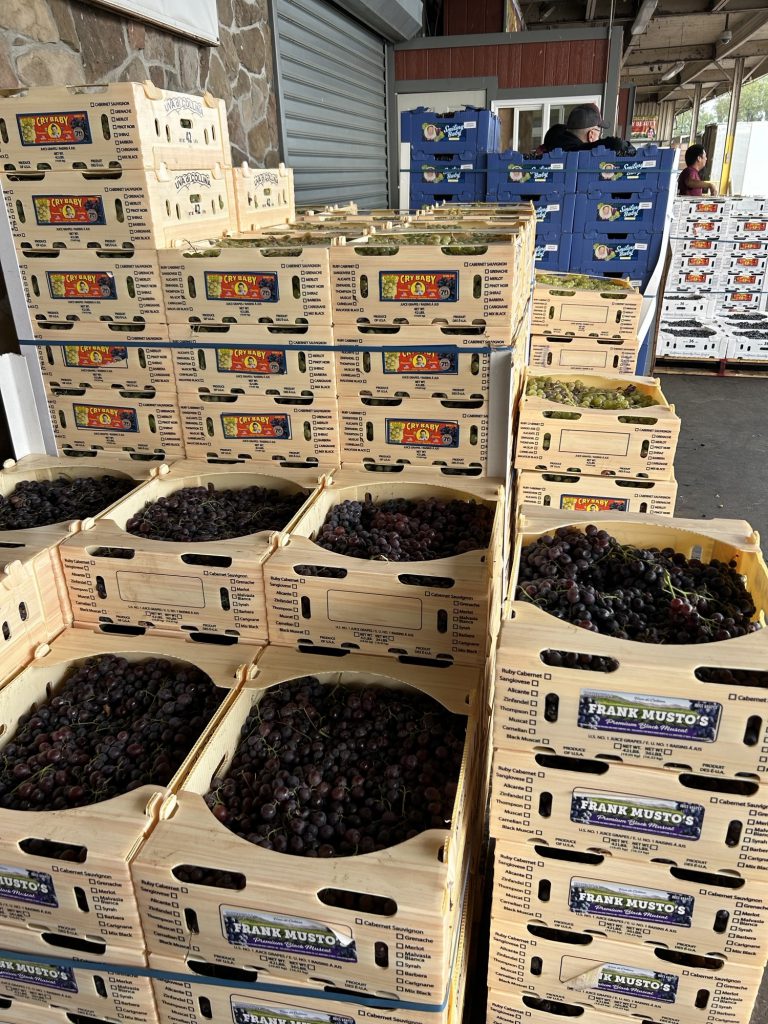
Hello Winemakers,
I hope this message finds you well. We are thrilled to share some exciting news from our vineyard as we kick off this year’s grape harvest season.
The conditions this year have been wonderful, resulting in a crop of the finest grapes we’ve seen in a long time. We wanted to give you a sneak peek into what’s happening here at Musto Wine Grape this week.
Grape Varieties: Our vineyards boasts a variety of grape types, each with its unique characteristics. This year, we have seen exceptional growth and quality across the board. From the bold and robust reds to the crisp and refreshing whites, our grapes are thriving.
- Alicante, Cabernet, Chardonnay, Barbera, Black Muscat, Grenache, Merlot, Malvasia Bianca, Muscat, Old Vine Zinfandel, Petite Sirah, Petite Verdot, Pinot Noir, Sangiovese, Symphony, Syrah, Thompson Seedless, Touriga Nacional, Zinfandel, and Zinderella
Wine Juices: We have a great selection of wine juices with fresh pails arriving daily. We are fully stocked with our California juice pails. The Italian juices will start to arrive in the first week in October, along with the pre-order Fresco juices.
- Alicante, Barbera, Cabernet Sauvignon, Chianti, Grenache, Merlot, Mixed Black, Old Vine Zinfandel, Pinot Noir, Red Blend, Sangiovese, Zinfandel, Black Muscat (Rosé), Chardonnay, French Colombard, Pinot Grigio, and White Zinfandel (Rosé), and more!!
- Reminder: Fresco juices must be ordered by 9/25!
Harvest Updates: Everything is ripening beautifully, promising an outstanding flavor profile.
- Suisun Valley will not start harvesting until the end of this week. We should start to see their grapes arrive in late September / early October. *A late addition* to the harvest menu – we will have Pinot Noir from Suisun Valley!! There are only a few boxes available. Give us a call to secure your PN today!
- Washington State Pinot Noir is harvesting this week. We might see it as early as 9/25. The Washington Cabernet, Merlot, and Cabernet Franc should start harvest in the next 2 weeks.
Produce: Every year Stevie works hard to bring you seasonally delish produce. This week we will have more Olives, Figs, and Plums available for purchase. Please call ahead if you have your heart set on anything. We will have limited quantities.
- Olives arriving 9/21
- Figs arriving 9/22
- Plums here
Winemaker In Your Pocket: Musto Wine Grape and Frank Renladi put together online courses you can access from anywhere! Check out our online classes via our sister site WinemakingInstructions.com.
- Full Winemaking Course – Over 46 videos of content!
- Online Winemaker Bootcamp
- Freebies
Our team is hard at work, carefully monitoring the grapes’ progress. We can’t wait to start turning these exceptional grapes into the finest wines! Stay tuned for more updates as the harvest progresses. We’ll be sharing behind-the-scenes glimpses, tasting notes, and more exciting news in the weeks to come.
Thank you for being a part of our journey at Musto Wine Grape. We look forward to sharing the fruits of this year’s labor with you and raising a glass together to celebrate the extraordinary flavors of our grapes.
Cheers to a bountiful harvest!
Christina & The Musto Crush Crew
Musto Wine Grape Co. / WinemakingInstructions.com
www.juicegrape.com / 877-812-1137 / cmusto@juicegrape.com
Wine Spotlight: Lanza-Musto Vineyards Malbec
Lanza-Musto Suisun Valley Malbec is a wine that brings velvety sweetness and dark complexity to the table.
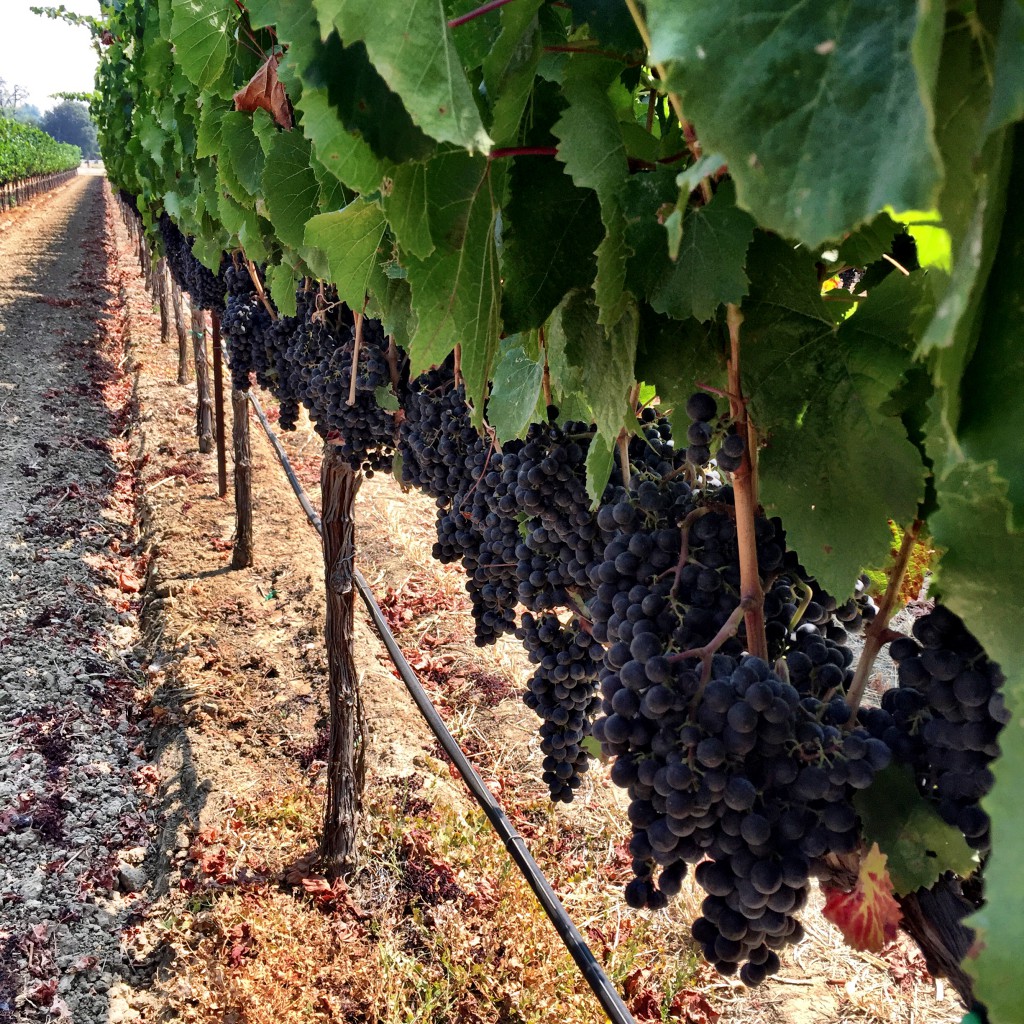
Suisun Valley, located in Solano County, California, is not traditionally known for Malbec wine production like some other regions, but it does have a small and growing reputation for producing high quality Malbec wines. If you’re considering buying Suisun Valley Malbec grapes, here are some reasons to consider:
Unique Terroir:
Suisun Valley’s terroir, characterized by its climate, soil, and topography, offers a unique and distinct environment for grape cultivation. While it may not have the recognition of regions like Argentina (known for Malbec), this uniqueness can result in wines with a different expression of the Malbec grape.
Varietal Exploration:
If you enjoy exploring different expressions of a grape variety, trying Malbec from a less common region like Suisun Valley can be an exciting adventure. It can offer a different flavor profile compared to Malbecs from more traditional regions.
Food Pairing:
Malbec is a versatile wine known for its medium to full body and rich, dark fruit flavors. Suisun Valley Malbecs can pair well with a variety of foods, including grilled meats, hearty pasta dishes, and cheeses.
Exploration:
If you’re an adventurous winemaker who enjoys exploring and discovering hidden gems, Suisun Valley Malbec can be an interesting addition to your wine collection.
Flavor Profile:
Medium bodied, mellow, fruity – raisins, fresh picked blueberries, plum, with soft, fine grained tannins, deliciously drinkable mocha notes.
Previous Season Grape Chemistry:
- Brix: 24.5
- pH: 3.29
- TA: .65gms/100ml
- Clone 9
- Planted in 2009
- Soil: Yolo, Silty Clay Loam
- VSP posititioning
To make an order please contact us via sales@juicegrape.com or call us at 877-812-1137, follow us on Facebook, Instagram, and Youtube, or check out the Harvest Tracker and Winemaker Blog on our website- juicegrape.com.
🍇🍷 Exciting News! The Black Muscat Wine Grapes Have Arrived! 🍇🍷
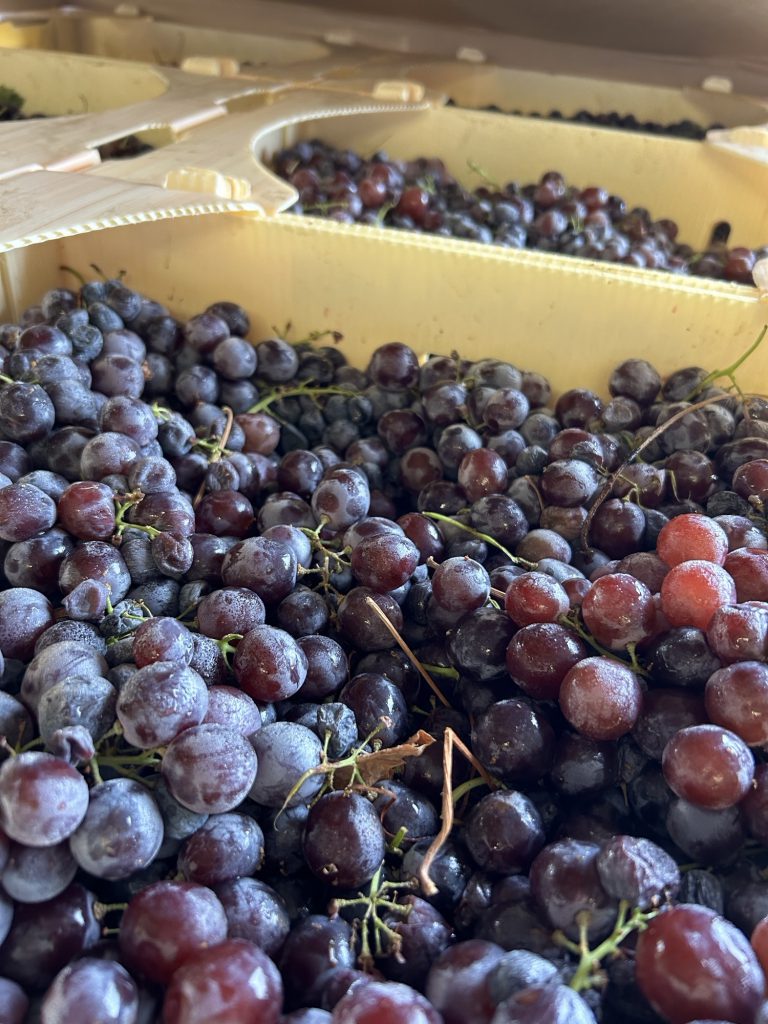
The dock is buzzing with excitement as we welcome the arrival of our beautiful Black Muscat wine grapes, ripened to perfection under the warm sun and nurtured with care.
🍇 Black Muscat
When it comes to grapes, we often think of the popular varieties like Cabernet Sauvignon, Merlot, or Zinfandel. However, tucked away in the world of vineyards is a gem that’s lesser-known but equally delightful – Black Muscat grapes. These grapes are a true delicacy, offering a unique combination of intense flavor, striking appearance, and a rich history. Black Muscat makes a fantastic sweet rosé, light red wine, and is a great base for Raki. In this post, we’ll dive into the fascinating world of Black Muscat grapes and explore what makes them so special.
🌞 A Brief History
Black Muscat grapes have their origins in the Mediterranean and are closely related to the Muscat family of grapes, known for their aromatic and sweet qualities. These grapes have a long and storied history, dating back thousands of years to ancient times when they were cultivated for wine production and used for medicinal purposes.
🍷 Flavor Profile
Black Muscat grapes are known for their stunning appearance. They are a large to medium-sized, round or oval in shape, and have a deep black or purple-black skin. When you hold a bunch of Black Muscat grapes in your hand, you can’t help but be captivated by their dark, enchanting beauty. The real magic of Black Muscat grapes lies in their flavor. These grapes are renowned for their intense aromatics and sweetness.
IN STOCK FOR THIS WEEKEND:
- Grapes: Grenache Noir, Grenache Blanc, Black Muscat, Muscat, Pinot Noir, Tempranillo, Teroldego, Barbera, Cabernet, Merlot, Zinfandel, Old Vine Zinfandel, Mettler Pinot Grigio, Mettler Grenache, Alicante, and Thompson Seedless
- Juices: Cabernet Sauvignon, Merlot, Zinfandel, Grenache, Black Muscat, Mixed Black, Petite Sirah, Pinot Noir, Ruby Cabernet, Syrah, Chardonnay, Muscat, Pinot Grigio, Riesling, Sauvignon Blanc, Thompson Seedless, Viognier, and White Zinfandel
- Always call ahead to make sure you have the most up to date stock information!
Raki & Black Muscat:
Additionally, to wine – Black Muscat is a great grape to use for the drink Raki. Raki is the National drink of Turkey. It is also a popular drink through the Baltic regions and in Albania.
Raki is a traditional alcoholic beverage that is popular in several countries, especially in the Mediterranean region, including Turkey, Greece, Albania, and parts of the Balkans. It is an anise-flavored spirit with a strong, distinctive taste. The production process of raki typically involves several steps:
- Fermentation of Grapes or Other Fruits: Raki can be made from a variety of fruits, with grapes being the most common choice. Black Muscat has gained in popularity over the years to be the preferred grape to use. The first step is to crush and juice the fruit, which is then fermented. Yeast is often added to initiate the fermentation process, converting the sugars in the fruit into alcohol. This initial fermentation usually takes a few weeks.
- Distillation: After fermentation, the liquid is distilled to increase its alcohol content. The traditional method involves using a special copper pot still called a “degirmen” in Turkey or “rakia” in Greece. The fermented fruit mash is heated, and the alcohol vapor is collected and condensed to produce a high-proof spirit. The distillation process is usually repeated to ensure a higher alcohol concentration.
- Anise Flavoring: Anise seeds or aniseed are an essential ingredient in raki production. These seeds are typically crushed or ground, and the resulting powder is added to the distilled alcohol. This gives raki its characteristic licorice-like flavor and cloudy appearance when mixed with water. The anise-flavored alcohol is allowed to rest for a period, allowing the flavors to meld.
- Dilution: Raki is typically consumed by diluting it with water, which also causes it to turn cloudy due to the anise oils becoming less soluble. The ratio of water to raki can vary according to personal preference but is often around 1:1 or 2:1 (water to raki).
- Bottling and Aging: Some raki may be aged in wooden barrels for a short period to mellow its flavors, although this is less common than with other spirits like whiskey or brandy. Once the aging process is complete, the raki is typically filtered and then bottled for sale.
It’s important to note that the production methods and ingredients may vary from one region to another, and there may be slight variations in the production process. Also, the alcoholic content of raki can vary, but it is generally around 40-45% alcohol by volume.
Enjoyed primarily as an aperitif or as an accompaniment to meals, raki has a strong cultural significance in the countries where it is popular, often being consumed during social gatherings and special occasions.
Black Muscat & Rosé:
On the nose there is passion fruit, guava, sweet strawberry, sweet cherry, and papaya. The aromatics continue through the palate with a touch of crisp acidity. As a dry wine this light bodied Rose is full of complexity and flavor. If you’re more of a sweet winemaker, adding about 1-2% Residual sugar to this wine would make for a very aromatic and balanced sweet wine.
Black Muscat Winemaking Recipe:
- Crush the Black Muscat into vat
- Add Potassium Meta to kill native yeast, let sit for 12 hours
- Add Cinn Free, stir must, let sit for another 12 hours
- Press juice after 24 hours on the skins
- Add Booster Blanc and Opti White (dilute in spring water, mix like pancake mix, dump into must, mix up)
- Pitch yeast after 24 hrs on skins, make sure juice is at 65 degrees. If not let it warm up. Use VIN13 yeast.
- Next Day: Add Fermaid O
- Monitor Brix levels daily
- At 1/3 of a drop in Brix (10-8 Brix) add Fermaid K
Please Note:
The color might be light. It darkened up over time. And if it doesn’t darken up enough to your liking, I have some “pixie dust” that will help with the color during the aging process. Also, after fermentation I added Noblesse at my first racking. This is because I thought the acid was a little high and it helped soften the mouthfeel. Every year is different, so you might not need to do this. Taste it after fermentation and then decide.
If you are interested in making Black Muscat wine and having any questions please feel free to reach out to our winemaking professionals via phone or email – 877-812-1137 or sales@juicegrape.com.
Don’t forget about our Winemaking Classes…
Hands-On Winemaking: Back by popular demand is our Winemaker Bootcamp. The September Class will start Saturday September 16th, 2023 at 9:00AM – 12:00PM (runs for 5 weeks). The October Class will start on Saturday October 21st, 2023 at 9:00AM – 12:00PM (runs for 5 weeks). Make sure to sign up via the website or email cmusto@juicegrape.com if you are interested. There is only 1 space left in the September class and only 2 spaces left in the October class!
Winemaker In Your Pocket: Musto Wine Grape and Frank Renladi put together online courses you can access from anywhere! Check out our online classes via our sister site WinemakingInstructions.com.
We look forward to seeing you at pick up this season! 😊
Cheers!
Christina & The Musto Crush Crew
Musto Wine Grape Co. / WinemakingInstructions.com
The most anticipated time of the year is finally upon us – Wine Season is HERE!
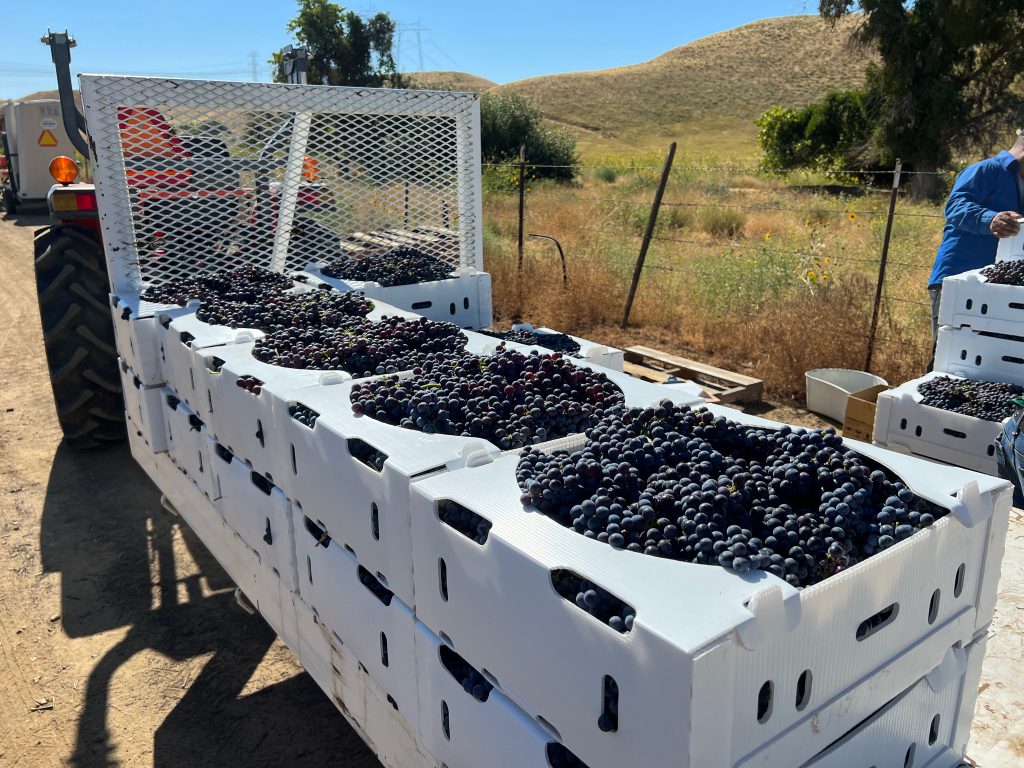
Hello Winemakers,
I’m sure you are itching to get back into the winemaking process. It’s the most exciting time of year in our opinion!
The art of winemaking is truly remarkable and allows us to witness transformative magic unfolding right before our eyes. Just imagine the symphony of aromas that will fill the air as the grapes are crushed, releasing their juices, and bringing forth the promise of a beautiful vintage. Picture the vibrant colors dancing in the fermenters, as the yeasts work their magic, transforming sugar into alcohol. And oh, the joy of witnessing the first bubbles forming during fermentation, a sure sign that our wine is well on its way.
With every batch, we have the opportunity to experiment and refine our craft, constantly pushing the boundaries of what is possible in winemaking. Get excited to make a wine you will love this season!
Here’s what you can look forward to this week:
*If there is something you have your heart set on, please call ahead
- Grapes & Juices Arriving by 9/15:
- Juices: Alicante, Barbera, Cabernet Sauvignon, Chianti, Grenache, Merlot, Mixed Black, Old Vine Zinfandel, Pinot Noir, Red Blend, Sangiovese, Zinfandel, Black Muscat (Rosé) Chardonnay, French Colombard, Pinot Grigio, and White Zinfandel (Rosé).
- Grapes: Grenache, Merlot, Old Vine Zinfandel, Syrah, Teroldego, Black Muscat, Chardonnay, Fiano, Pinot Grigio, Sauvignon Blanc, Thompson Seedless, and Vermentino.
- Olives: Stevie “The Olive King” has secured the green olives for this season. He is bringing in big and small sizes, each in 16lb cases. We will have limited stock so please call ahead before you drive down. They should arrive by Friday 9/15.
- Winemaker Hours: Winemaker Sam is on vacation until September 15th. But Winemaker Barry will be in on Tuesdays, Fridays, and Saturdays to assist you with your fermentation and winemaking questions.
- Harvest Store Hours: We are officially open 7 days a week! Mon-Friday 7:00am-5:00PM, Sat 6:00AM-1:00PM, Sun 7:00AM-12:00PM
- New York/New Jersey Pick Up: D’Arrigo will be a pickup location for us in the Bronx, NY. You can pre-order with MWG and pick up your order closer to home! Ask your sales representative for more details.
- Delivery Services: MWG has an extensive delivery network. If you are interested in delivery, please ask your sales representative for more details.
- Currently In Stock (as of 9/11):
- Grapes: Grenache Noir, Grenache Blanc, Muscat, Pinot Noir, Tempranillo, Teroldego, Barbera, Alicante, and Thompson Seedless
- Juices: Cabernet Sauvignon, Merlot, Zinfandel, Grenache, Mixed Black, Petite Sirah, Pinot Noir, Ruby Cabernet, Syrah, Chardonnay, Muscat, Pinot Grigio, Riesling, Sauvignon Blanc, Thompson Seedless, Viognier, and White Zinfandel
- Always call ahead to make sure you have the most up to date stock information!
Looking ahead to Next Week:
Harvest Updates: Suisun Valley Sauvignon Blanc is around 22 Brix and the Brunello Clone Sangiovese is around 21 Brox. We should see Suisun Valley fruit start to harvest towards the end of September. Lodi will start to harvest more Cabernet, Zinfandel, and Merlot this week. Central Valley harvest is in full swing and will be arriving daily. Washington State Pinot Noir should start to come off the vine around 9/16, and arrive around 9/22. The Fresco Juice order deadline is 9/25 and they should start arriving the first week in October. Italian juices are set to delivery in the first week in October.
Don’t forget about our Winemaking Classes…
Hands-On Winemaking: Back by popular demand is our Winemaker Bootcamp. The September Class will start Saturday September 16th, 2023 at 9:00AM – 12:00PM (runs for 5 weeks). The October Class will start on Saturday October 21st, 2023 at 9:00AM – 12:00PM (runs for 5 weeks). Make sure to sign up via the website (link: 5 Week Winemaking Bootcamp (juicegrape.com)) or email cmusto@juicegrape.com if you are interested. There is only 1 space left in the September class and only 2 spaces left in the October class!
Winemaker In Your Pocket: Musto Wine Grape and Frank Renladi put together online courses you can access from anywhere! Check out our online classes via our sister site WinemakingInstructions.com {link: Learn How to Make Your Own Wine (winemakinginstructions.com)).
We look forward to seeing you at pick up this season! 😊
Cheers!
Christina & The Musto Crush Crew
Musto Wine Grape Co. / WinemakingInstructions.com
cmusto@juicegrape.com
T-minus 7 days and counting until grapes and juices start to arrive!
Hello Winemakers,
We are working hard getting your grapes and juices secured. We should start to see juices and early ripening grapes arrive the week after Labor Day. Our prices have been finalized! Give us a call or shoot us an email to chat about your order this season 877-812-1137 / salesjuicegrape.com.
Juices Arriving Wednesday 9/6: Cabernet Sauvignon, Merlot, Zinfandel, Grenache, Mixed Black, Petite Sirah, Pinot Noir, Ruby Cabernet, Syrah, Chardonnay, Muscat, Pinot Grigio, Riesling, Sauvignon Blanc, Thompson Seedless, Viognier, and White Zinfandel
Grapes Arriving Thursday 9/7: Grenache Noir, Grenache Blanc, Muscat, Pinot Noir, Tempranillo, Teroldego, Barbera, Alicante, and Thompson Seedless
Store Hours: We will be open 7 days a week beginning the weekend of September 9th!
Winemaker Hours: Winemakers Sam and/or Barry will be in the office Tuesday through Sunday starting the week of September 18th. They will be in from 8:00AM-2:00PM. You can also email winemaker Sam at slee@juicegrape.com
Winemaking Classes:
Winemaker Bootcamp: Back by popular demand is our Hands-On Winemaker Bootcamp. The September Class will start Saturday September 16th, 2023 at 9:00AM – 12:00PM (runs for 5 weeks). The October Class will start on Saturday October 21st, 2023 at 9:00AM – 12:00PM (runs for 5 weeks). Make sure to sign up via the website or email cmusto@juicegrape.com if you are interested. There are only 3 spaces left in the September class and only 4 spaces left in the October class!
Next FREE Winemaking Class: Our next Facebook Live/Zoom class will be Thursday, August 31st at 7:00PM. Join us for our class about How to Prep for Harvest” tips for setting yourself up for success and making your favorite wine yet! The class will be held via Facebook Live & Zoom. Make sure to log in and watch as we chat at 7:00PM EST on Thursday, August 31st.
Zoom Link: https://us06web.zoom.us/j/82981391470?pwd=MnJwMVQydEd6QkluTmJBaER6a2F4Zz09
Facebook Live: How do you access Facebook Live? It’s easy. Go to Musto’s Facebook Page {Musto Wine Grape Company, LLC. | Hartford CT | Facebook} on the given date/time, and Frank’s class will automatically pop up on your screen. There you can ask questions in real-time. We hope you enjoy this series and look forward to bringing you more information to help you make your favorite wine!
Online Classes: Don’t forget that you can always access Musto & Frank Renaldi’s online classes via our sister site WinemakingInstructions.com {Learn How to Make Your Own Wine (winemakinginstructions.com))
Keep an eye out for our emails as grapes and juices start to arrive!
Cheers!
Christina & The Musto Crush Crew
Musto Wine Grape Co. / WinemakingInstructions.com
cmusto@juicegrape.com
Field Updates from Our Growers
Hello Winemakers,
We wanted to give a quick update from our growers in the field! We’re raising our glasses high and toasting to the heart and soul of our wines – our incredible growers! 🥂
Without these passionate and dedicated individuals, our delicious grapes wouldn’t be the stars of the show. Here’s to the early mornings and late nights, the unwavering commitment, and the endless pursuit of perfection. Your dedication shines through in every sip we take, and we’re truly grateful for the magic you bring to the vineyards. 🍇
So let’s clink our glasses and raise a toast – your hard work is the essence of our success, and we can’t wait to continue this journey together! 🍷
Pricing Updates:
Prices have been finalized! Give us a call or shoot us an email to chat about your order this season 877-812-1137 / salesjuicegrape.com.
Suisun Valley:
“I’m enjoying this growing season so far this year, reminds of the old normal where we begin harvesting after Labor Day. Hopefully producing a memorable vintage year” – Ron Lanza, Lanza-Musto Vineyards
Lodi:
“This year looks like it will be a great year. It is going to be a later condensed season for Lodi fruit, with everything coming off the vine at once. We are excited about our Old Vine Primitivo crop and the wine it will make. Looking forward to sending high quality fruit to the East Coast.” – Berton Costamagna & Paul Pourte, Costamagna Vineyards
Central Valley:
“The grapes are coming along and look beautiful. We got small traces of rain but nothing to be concerned about. We’re looking forward to start shipping grapes out the first week of September.” – Joe Guerriero
Washington State:
Rattlesnake Hills: “2023 has been a very good growing season. It is rivaling 2021 in terms of growing degree days, so plenty of ample heat for full ripening and rich flavors. The difference between 2023 and 2021 though is that this season’s heat has been relatively even, with no harmful sudden spikes, so we’re seeing very classic vine and fruit behavior in terms of yields and ripening. A little earlier than usual harvest is expected.” – Jeremy Porter, PineBrake Vineyards (formally Allechante Vineyards)
Candy Mountain – “Harvest is on the early side this year. Lighter crop, nice growing season after a cool spring start. Fruit quality is looking excellent. Flavors in the fruit are developed even at lower sugars.” – Marshall Edwards, Shaw Vineyards
Reminder – we will be open 7 days a week beginning the weekend of September 9th!
Below is a Tentative Arrival Dates calendar that covers most of the major grape regions and the fresh juices. Keep an eye out for more updates as we get closer to Labor Day.
Winemaker Hours:
One of our on-staff Winemakers -Sam Lee will be in the store and available for questions on Tuesdays and Fridays from 8:00AM-2:00PM. If you want to speak to a winemaker in person, make sure to stop by and see Sam! You can also email him at slee@juicegrape.com.
Winemaker Bootcamp: You have been asking and we are gearing up for TWO classes this season. Back by popular demand is our Hands-On Winemaker Bootcamp. Dates and information have been posted on the website. If you want to get in on the “early-in” bootcamp list, email cmusto@juicegrape.com for more information.
Next FREE Winemaking Class:
Our next Facebook Live/Zoom class will be Thursday, August 31st at 7:00PM. Join us for our class about How to Prep for Harvest” tips for setting yourself up for success and making your favorite wine yet! The class will be held via Facebook Live & Zoom. Make sure to log in and watch as we chat at 7:00PM EST on Thursday, August 31st.
Zoom Link: https://us06web.zoom.us/j/82981391470?pwd=MnJwMVQydEd6QkluTmJBaER6a2F4Zz09 Facebook Live: How do you access Facebook Live? It’s easy. Go to Musto’s Facebook Page on the given date/time, and Frank’s class will automatically pop up on your screen. There you can ask questions in real-time. We hope you enjoy this series and look forward to bringing you more information to help you make your favorite wine!
Don’t forget that you can always access Frank Renaldi’s online classes via our sister site WinemakingInstructions.com.
Cheers!
Christina & The Musto Crush Crew
Musto Wine Grape Co. / WinemakingInstructions.com
cmusto@juicegrape.com
Tentative Arrival Dates
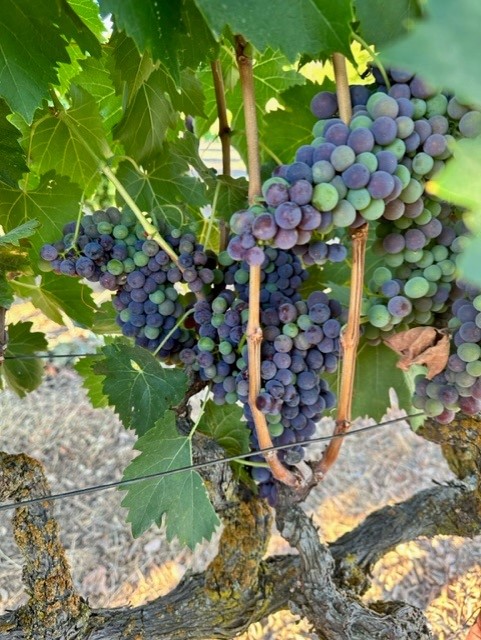
We are working on finalizing our prices, we will have them finished by next week.
As of now, we are on track to receive grapes from Central Valley and Fresh Juice the week after Labor Day. Our grapes from Lodi, CA will start arriving around September 11th. Lanza grapes will start arriving in mid-September. Washington State should start to arrive in early to mid-October. The Fresco Juices and Italian Juices should arrive by the first week in October.
We will be open 7 days a week beginning the weekend of September 9th.
We are looking forward to working with you this season. Please keep an eye out for Emails, the Harvest Tracker, the MWG Blog, and our Social Media for more information.
2023 Harvest Report
Every year we work to bring you the highest quality products at the best prices. This season we have done just that. We have some new vineyards being added to the portfolio that will knock your socks off! And there will be new wine grapes available from the high-quality, reliable sources you’ve come to know and love.
Let’s get started with the Harvest Report!
To keep up to date on harvest dates check in with us via sales@juicegrape.com or call us at 877-812-1137, follow us on Facebook, Instagram, and Youtube, or check out the Harvest Tracker and Winemaker Blog on our website- juicegrape.com.
THE GRAPES
Suisun Valley, CA – Lanza-Musto Vineyards: Suisun Valley was established in 1982 and is one of the oldest AVAs in California. Suisun Valley is home to a group of grape growers and winemakers who put their heart and soul into everything that they do. Located southeast of Napa Valley (sharing a county line), Suisun Valley lies in the foot slopes of good grape land between the picturesque Vaca Mountains to the east and St. George Range to the west. The Suisun Bay that connects to the San Francisco Bay sits to the south, lending a unique cooling coastal breeze. The soil is made up of volcanic rock, silt, sand, and clay allowing it to grow many different types of wine grapes; having over 28 varieties planted within this eight-mile-long and three-mile-wide AVA. We are expecting a high-quality year! The grapes got some decent rain, which resulted in fertile soils, nutrient-rich vines, and exceptional skin quality. The crop looks to be the size of a normal crop year, and we are currently on track for normal ripening and harvesting times. The Lanzas are introducing a new box, which will be sturdier with ample airflow for travel. We will have Barbera, Chardonnay, Cabernet (Clone 169, Clone 15, and Clone 8), Merlot, Malbec, Muscat Cannelli, Petite Sirah, Petite Verdot, Riesling, Sangiovese, Sauvignon Blanc, Syrah, and Tempranillo available this fall.
Lodi, CA – Home to some of our oldest standing contracts and relationships, Lodi is a premier wine region consistently on the rise. With the LODI RULES sustainability effort moving full force through the AVA, we have seen and continue to see great wine-producing fruit come out of Lodi. During the growing season, warm, sunny days allow for optimal ripening of wine grapes. By contrast, cool winds off the Pacific Ocean which travel inland over a network of waterways act as a natural air conditioner for the region, helping winegrapes maintain balanced acidity. This season we have a “new” Primitivo coming in. We were able to procure some of it last season, but this season we will have a good amount of Old Vine Primitivo. This vineyard was planted in 1902! Along with this special Primitivo, we will have fruit from Mettler Ranch, Costamagna Vineyards, Zinderella, Valley Beauty, and Contra Costa just to name a few. This season we should start to see Lodi fruit come off the vine in early September. It is looking to be a normal-sized crop with good-looking berry bunches and seed development. We should see Lodi fruit start coming off the vine in early September, hitting MWG’s dock around early-mid September.
Central Valley, CA– Central Valley is California’s agricultural heartland. It is composed of two valleys that stretch almost 500 miles down the center of the state. The Sacramento Valley and San Joaquin Valley border on the east, by the Sierra Nevada Mountains. The total acreage under wine grape cultivation in the Central Valley is around 895,000 acres. To say Central Valley is the leader in California’s wine grape production would be an understatement. With many sub-AVAs, the Central Valley offers a lot of delicious winemaking grapes with a lot of history. Some of the oldest grape vines in California are grown in Central Valley. Since it is a hotter region, these will be some of the first to come off the vine. If you are interested in Central Valley fruit be ready to crush after Labor Day.
Washington State– We are excited to be bringing you a new vineyard option from Washington this season – Candy Mountain AVA. One of Washington States’ newest AVAs, Candy Mountains’ south-facing slope sits just southeast of the Red Mountain AVA. At around 900 acres, it’s also the smallest AVA in the state. With outstanding growing conditions, it produces, rich fruit-forward grapes with nice minerality and tannins. We will be bringing in Cabernet from Candy Mountain this season. It is looking like a lighter crop and an earlier season this year for Washington State. Candy Mountain is looking to harvest around September 25th, and Wahluke Merlot around the 1st week in October. The Wahluke Cabernet Franc should start to harvest around October 15th. Our Pinot Noir from Rattlesnake Hills should harvest the earliest, sometime around September 20th.
THE JUICES
We bring in juices from all over the world! Below is information regarding our juices and their availability this fall.
California Fresh Juice – We source premium California juice from all over the state. Winemaking juices are a great resource. You can make great wine without bulky equipment. Our fresh juices are ready to ferment when you get home. They have native yeast in them from the grape skins. You can let the native fermentation take place or you can inoculate with your preferred yeast. Either way, you will have a delicious wine that is ready to drink sooner than later. *We always suggest adding yeast because of how long the juice traveled.
California Fresco Juice– The difference between the Fresco Juices and the Fresh Juices is that the Fresco Juices are inoculated with yeast, enzymes, and other “seasonings” that help the wines have a successful fermentation, better color, aromas, tannic structure, and mouthfeel. We call it the “set and forget” juice. It is a great product that produces high-end results.
Italian Fresh Juice– We source premium juices from Puglia and other regions of Italy. These juices create wines that resemble that of the old country. Wines full of flavor and history! They have native yeast in them from the grape skins. You can let the native fermentation take place or you can inoculate with your preferred yeast. *We always suggest adding your own yeast because of how long the juice traveled.
Italian Fresco Juice– The difference between Fresco Juices and Fresh Juices is that the Fresco Juices are inoculated with yeast, enzymes, and other “seasonings” that help the wines have a successful fermentation, better color, aromas, tannic structure, and mouthfeel. We call it the “set and forget” juice. It is a great product that produces high-end results.
NY State – Our NY State portfolio offers hybrid winemaking juices in 5-gallon, 60-gallon, and 275-gallon sizes. Due to this season’s frost, we will not have as many varieties available. Please email or call Christina if you are interested in these juices.






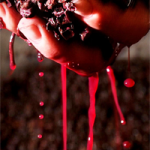
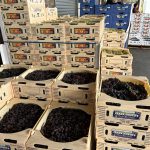
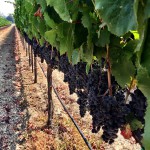
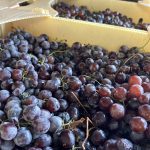
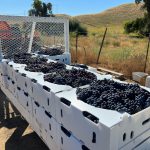

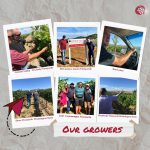
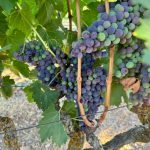
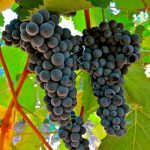
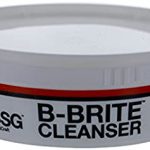
Recent Comments